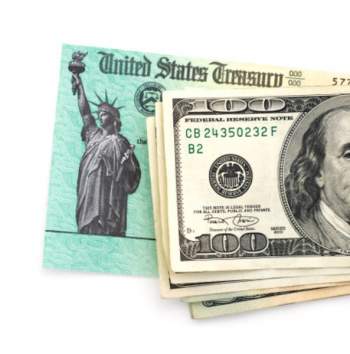
All Travelers Should Use Traveler's Checks

A traveler's check is essentially a specialized form of check designed to provide travelers a safer form of money. Traveler's checks follow the same basic rules of checks in that they are drafts. But there are several unique elements of traveler's checks designed to make them better suited for usage during travel.
The primary role of a traveler's check is to serve as a different kind of currency, as each traveler's check is made out for a fixed amount, even prior to the purchase of those checks. When a purchaser obtains traveler's checks, he or she is spending his or her own money in exchange for a set of traveler's checks of equal value so that he or she may use those traveler's checks as unconditional payments to another party no matter where the traveler may go.
The main advantage of a traveler's check is that if it is lost, the issuer of that traveler's check will likely issue a replacement check, assuming that the traveler can show evidence of purchase of the traveler's check. This means that traveler's checks have a fair degree of safety to them for the traveler, as even if they are stolen the traveler will be able to obtain a replacement.
For this reason, traveler's checks are often considered more useful than cash for travelers, as cash, when stolen or lost, will not be replaced. Furthermore, traveler's checks can be obtained in any of a number of different currencies, increasing their overall utility.
A traveler's check differs from common checks in some ways, as the terms of a standard check are modified with reference to traveler's checks. A traveler's check, for instance, is technically a draft, but it might also be examined as a form of promissory note. When viewed as such, the traveler would be loaning money to the issuer of those traveler's checks in exchange for the right to call in that debt at any time by cashing the traveler's check.
In that light, when a traveler uses a traveler's check for a payment, then he or she is only transferring the right to call in the debt of the traveler's check. This is not the official form of how a traveler's check functions, although it is a useful way to understand the differences between traveler's checks and regular checks.
For a traveler's check, the three primary terms of a draft are redefined somewhat. Normally, in a draft, there are three parties involved: the drawer (issuer or maker), the drawee, and the payee. But in a traveler's check, there are four parties involved.
The payee remains the same as the party to whom the traveler's check is made payable in exchange for goods or services. The issuer of the traveler's check is the organization that makes the traveler's check in the first place; this is often a major company such as American Express. This company is the one from whom money is being drawn to support the check in all instances and is the party responsible for replacing the check.
The agent, on the other hand, is the party that actually sells the traveler's checks directly to purchasers. The agent might be a bank or other store which had previously obtained the traveler's checks from the issuer. The purchaser, then, is the party that buys a traveler's check for the sake of using it later in payment to a payee or for deposit.
Traveler's checks have certain security risks associated with them, especially because they are effectively a form of cash. As a result, in some cases the payee may ask for ID of some sort to ensure that the traveler's check in question is actually connected to the person attempting to make payment with it.
The payee may then check the signature on that ID against the signature which the purchaser should have put on the traveler's check. Payees may also seek confirmation with the traveler's checks' issuers in order to ensure that they are valid. This will help avoid the acceptance of stolen traveler's checks.
NEXT: Ensure That Your Checks Are Honored!





















